
btate
-
Posts
121 -
Joined
-
Last visited
Content Type
Events
Forums
Downloads
Quizzes
Gallery
Blogs
Posts posted by btate
-
-
I don't see any plant damage in the photo. Do you have any?
Sygenta make a couple of products available in Thailand and
recommended by Maize Farmer. They are the systemic type
so they work on the plant root system.
Check the last couple of posts on "Growing Makua" thread, he
defines one of them there. Need very very little to be effective.
Bt
-
Some further info.
I had placed a bamboo stick in the bucket with the plant that was just hacked/trimmed.
I took it out yesterday since the plant didn't need the support. The whole stick was absolutely wet. From the surface level to the bottom of the stick. It was nearly wet enough that the water would run off.
Apparently I've been overwatering by a substantial amount, especially those in buckets. Another clue was the ground around the buckets is moist at all times, seemingly from the runout from the holes in the sides of the buckets.
I have been giving each plant in buckets a little over 1 liter of water twice a day. MF's regimen of watering doesn't really specify the actuall amount each plant should recieve. In my case it looks like a lot less than 2 liters a day. A couple of factors may be involved. One, the humidity is always very high here; two I put about a 1/2 inch layer of wood shavings around the plants to act as a mulch to retain moisture as it is almost always breezy here.
The other plants in buckets are now showing the same signs (brown ends etc.) as those I've posted previously. It will be interesting to see the fruits of the inground plants that have substantially more drainage but recieved the same amount of water.
This whole experiment has been quite enlightening, hope MF comes back with his knowledge base to continue his guidance of us novitiates.
Bt
-
Went to the Makham market on Tues.
Two different prices for Makua..
What appear to be F1 Hybrid (East-West type), they are the almost totally white ones, 15 Baht for 250 - 300 grams.
The tiger variety were 20 Baht for the same amount.
All were in excellent condition without any sign of brown spots.
Just a comparison.
A week ago at Lotus in Chantaburi, F1 (whites) were 39 per Kilo and were not perfect.
Bt
-
Well, chopped the crap out of the 'bad' plant as MF suggested. It
will be interesting to see the results. On close inspection I found these
critters, not only on the chopped plant but on all the others.
At least one on every leaf of every plant... No evidence of them
doing damage.... No visible aphids so that problem appears to
be solved.
BTW these fruits a very sweet, according to the missus. Not the
species that MF recommends but otherwise quite good.
Am having some trouble finding East West Seeds here in the area
will have better luck in the "city". lol
Bt
-
Numbers dont quite add up, 1 x cm of water = 1000litres = approx 1 tonne
theory of displacement indicates that if you place 1tonne of fish in 1 cm of water,theoretically all water is displaced by the fish. of course the mathemeticians out there will let me know this isnt so.
I am basing my theory on the displacement weight of ships ,IE.the weight of the water displaced by the hull.

Me thinks you are all taking the poster just a little too literlally.
Think 1 Cu meter of water + "nearly" one ton of fish. Possibly
in a two or three meter tank????...
He did not say he was raising a ton of fish in a 1 Cu meter tank
full of water...
Just an observation.
Bt
-
Btate
Lets start again!!!
No need to bin the plant, but it got off to a bad start.
My suggestion: start again - trim it right back - just as one would trim back a fruit tree for each season.
At the same time water it with an insecticide called ACTARA for two or three days. ACTARA is made by Syngenta, the same company that makes Karate Zeon. In this case it would be a better choice in my opinion as if it is given to the plant when watered, after it has been trim back, all the new foilage will be aphid (and literally any other bug) resitant - and should you be concerned about ladybirds and other predatory insects, then this method of applying the insecticide will not destro them.
It gets absorbed through the roots and sytemically works it's way throughout the whole plant - protecting it from insect damage - from the root up, to include all the leaves and fruit. It will also last a long time. You will suffer no more insect damage.
Actara is not cheap - it's about B500 for a container that is about the size of a tea-cup, but as said, 1/2 and ounce will do one rai, and you so seldom have to use it. That along with how comrpehensively it deals with all plant pests means it works out to be well worth it as you'll not have to spend anything else on insectides.
I'll have some input for you later this week reagrds the other damage (to the actual makua) - at which point I'll through in my 2 cents worth on that side of things.
MF
Great, have been waiting for your learned observations...
Thanks
Bt
-
One additional note
I asked the Ms how they tasted, in reference to that which are locally available.
Her comment was "The white one was great, the other was too old"... both picked at
the same time. The brownish one has been on the plant for considerably longer than
the other.
Hmmmm
B t
-
I grew organic tomatoes in California and sold surplus in markets there. I've found that growing them here is different, but do-able.
I focus just on cherry tomatoes. Larger tomatoes just don't fare well for me here. Plus cherry tomatoes have great consistent flavor. I'd like to find some types of yellow tomatoes (all sizes) - if anyone knows of seed, please let me know.
Also: don't plant twice in the same space. Allow a year of two to go by, because root nematodes might ruin a 2nd crop in the same bed. There is no reason to grow tomatoes by any means other than organic. There are no pests for them.
They like lots of tilth, manure and to be watered liberally once a day.
You can dry surplus, or can them - though canning jars are not available in Thailand - you'll have to improvise. I can surplus with garlic and semi-hot peppers added. One year I put surplus in baggies in a freezer, but then the electric pooped out - so the whole mess went bad.
Two quick hits:
Look at the East-West seed site, on the Philippine page they have yellow varieties, maybe they can help you out.
As for canning jars... YEA! after months of inquiry I finally found a couple of old dusty ones in a glass shop in Chantaburi. They thought they finally had a sale.... yep by the case. They ordered them from Bangkok. They are Mason Jars - made in China - the name on the cartons is KIG Group Glassware.
Find a shop that specializes in glassware and see if they know of the company.... only problem is they "say" you cannot order extra top seals..... that has to be a screw up.
Bt
-
Thanks for the replies:
I should clear something up first I guess. I have grown tomatoes and have had good luck most of the time. In the original post I should have said that I was looking for someone that has grown decent tomatoes here. The focus is on what variety was successful. I'm looking for good salad/samich varieties.

I have looked at the East-West site and they have a couple that are resistant to the fungus caused by high humidity and are bred for 'heat set' which I've found is a problem here with most 'western' breeds.
I'm located in the East (Chantaburi area) and its HOT and HUMID.
I am currently trying some F1 Hybrid from East-West Seed. We shall see, they are about 15 cm at the moment and just starting the sun hardening process.
I've tried a couple of other 'local' brands and the plants were great but no fruits, just blossom drop.
I'll take a look for the Chau Yong Sen seeds and give them a run also.
I'll try and keep you posted on success or failure.
Bt
-
On page 4 of the Farming forum there's a recent thread on tomato growing.
I had read that thread, not a great deal of help to me as I'm not interested in growing Romas.
Bt
-
As I'm very fond of tomatoes I am constantly disappointed with the quality of
tomateos that are regurlarly available in Thai markets.
Now I know that the environmental conditions are really different from what
I'm used to. But surely there must be a tomato that can do well, not just
survive in this climate. I don't think Floridians or others living in the tropics
go without decent tomatoes.
Has any one had success in growing these vegetables in similar climates?
If you have would you mind shareing the methods and variety grown?
Bt
-
^ No, other than rain all watering is done at the base of the plants by hand.
Bt
-
Chownah, yea I did try the soap but I decided to go chemical since it was
a continuing problem. That hasn't worked as well as I thought but its OK
since this is a test situation.
Next step is to do 40 / 50 EXACTLY as MF recommends and see what
happens. I'll be using a drip irrigation set up and will continue to use chemical
feed supplements and pesticide.
IF that works OK I'll probably go the greenhouse route and then the chem free
system is more likely.
Below are two fruits from different plants. The smaller (UGLY) one is from what
I thought was the strongest/biggest of the bunch. The nice looking one is from
one of the plants that were "behind".
Obviously I've a problem with the one plant. Maybe MF can shed some light on
it. Possibley a water problem????
bt
-
OK camera works...
These photos show the condition of the fruit. Not to nice as you can see.
This next one is of the plant where the fruit were photo'd
And this is the stuff I'm using. I asked the store owner what to use on
tomatoes, he recommended this stuff.
I looked briefly for the stuff MF recommended but figured since I was only
working with a few test plants this would suffice.
Now I gotta go look again and get something that works through the root system.
My tomatoes are also at risk it seems, as aphids love em. Problem is figuring out
how little to use on a few plants vs. a rai or acre or hectare.
Bt
-
Just a note, for tonight will post some photos and more specifics when I get the camera rolling (read batteries charged) tomorrow.
Tonight while watering I've noticed a couple of things that are interesting to say the least. Makua are NOT a plant and go away thing, especially if your intent is to be a commercailly viable operator.
Kudos to MF, his advice to saturate my makua that are planted in-situ was spot on. He recommended several gallons per watering per cycle for two weeks to compact the sandy soil around the plants. After one week of the saturation treatment the difference in plant growth is noticeable. Thanks MF.
He is also to be listened to when he says... " ..... check your plants every day...." I am not used to spraying for aphids one day and seeing them reappear in two days time, but its happening... I hand spray with a bottle, I've just a few "test" plants to its not a problem, making sure to cover the underside of the leaves but they just keep on comin and comin.
I've also noted that the ants, the little black ones the Thai call Monsters, are all over the plants. The aphids and ants are into both the bucketed and the inground plants.
One plant, the largest is showing fruits in a number of spots, the others have at least one or two fruits showing, they should be in full bloom within a week. But, seems I've got a problem, they are really ugly looking and would come nowhere near the quality to sell, to any market.
I'll post with photos either tomorrow or the next day.
bt
-
yeah, right!!!!! check back in July and see how many footpaths you can walk on.
Bt
-
Thailand shouldn't worry about IT and its benefits/drawbacks until
they can do simple electrical stuff well.
Remember electricity is the basis for all this crap. Make a toaster,
hot pot, or even and extension cord guaranteed for a year. Then
come talk to me.
I'd be more than willing to help set up some processes for more complicated
tasks. Until they can control a PROCESS they will ultimately fail.
Descent design, manufacturing and servicing are all a matter of process.
No short cuts, no bending the rules, not payoffs, its called work.
Bt
-
Hmmmm didn't realize that coffee growers can 'up' production on such short notice.
yep, weather might provide additional yields but am sure that coffee is a rather long
term production cycle.
Bt BWDIK
-
What is suckering?
Suckers are the little branches that sprout from the "V" in the junction
between the main stem and branches of the plant. They do not provide
any usefull purpose in tomatoes, they just delete the energy without
providing fruit potential.
Works great in tomatoes (suckering), increasing the size and moisture
content of the final product.
At least that was what I was taught by my dad.
Bt.
-
MF
Had had only one cup of coffee when I posted that... duh
Suckering 15000 plants or so would be a full time job
for a crew of many. lol
Sorry to waste your time.
bt
-
Btate
I am going to suggest the most likely cause of stunted growth in the plant in the ground is simply because of water.
Yes - you may be giving both the same amount, but the one in the container retains the water close to the root structure, whereas the ground around the roots of the plant which is planted in the ground is acting like a sponge - the water is dispersing away form the roots quickly, and after half an hour of watering it, there is little to no water avalible for the plant.
To address that problem (should you wish) water it with about 5 - 10 bucket fulls of water each morning and each evening for about a week. The soil you have planted it in is very very sandy (which assists with water dispersion even more) - this will help consolidate the sandy soil around the plant and in a week or so it will have consolidated enough to allow you to go back to watering a bucket or so each evening (water in the evening when the soil is cool and the water has more tendency to soak in as opposed to been sucked to the surface).
Its as simple as that.
Other than that - both plants look reasonably healthy from what I can see from the photos, and I wouldn;t be at all concerned.
Keep us posted.
Maizefarmer
Thanks MF will do as advised. On the other question, do you sucker your makua. I am curious if this will improve yields down the line.
Bt
-
OK, I've been watching and learning on this thread for some time.
I tried "starting" my own and got miserable results. So, I cheated! Yikes
I bought a couple of seedlings already started at the local market. They were
in the typical plastic bags that you normally see. Brought them home and
transferred to some starter pots, the black 3/4 liter kind. At the time they
were between 4 in. and 7 in.
Placed them where they got full sun for about 3 hours in the morning and
the rest of the day bright shade. Watered religiously morning and evening
with about a liter of water each time.
After a month I replanted, a couple in the large white buckets and some in
the ground. I am very suspicious of the ability of this 'dirt' to produce as it
looks like red lava rock mixed with sand and gravel.
This one in the bucket is doing very well as doubled in size since replanting in
a mixture of potting soil, manure and added some wood shavings from a planer
on the top to maintain moisture.
This one looks stunted. It may have grown about 10% or so. I dug a hole about
the size of the bucket, added the same combination as the bucket. While the plant
looks heathy it sure hasn't progressed as well as its big brother.
The plants all have at least one flower the biggest has several that have 'gone by'
yet no fruit is showing. Maybe I'm just not patient enough. The difference in the
bucketed and in-ground planting is obvious. The bucket has it hands down.
Have had some problems with aphids and some small white things eating the leaves.
Basic hand sprayed tomato pesticide seems to have done the trick.
Now for a couple of questions for Maizefarmer or anyone else that might have the
knowledge.
1. Do you sucker makua the same as tomato plants. i.e. removing the tweeners?
2. I have used some 20-20-20 as it was available and I didn't think it matters much.
Is that assumption correct?
This was a very minimal test at best, however, it did prove the idea of planting in
buckets the comparison is startling.
I'll do a larger test later on. I've found some paper cups - non waxed - that I'll start
the next batch of seed. When I used to do tomatoes as a kid I would start them in
paper cups and when ready to plant would rip out the bottom and place the whole
thing in the ground. The cup acted as a collar preventing worms from getting to the
tender stems and they eventually disintigrate with moisture etc. Should work.
Thanks to all for a neat and helpful thread.
Bt
-
I have to concede to Chownah on the slow filter, he's got one in operation.
I thought the "slow" was the important part, for bacterial action.
Here's a good link for drip irrigation, inc flow rate, filters etc.
http://www.irrigationtutorials.com/
Maizefarmer, I think you said you used drip for makua in buckets, what filtration did you use ?
Pond Life
Thanks for the link, has some really good info for iJiots like myself.
Bt
-
Pondlife
BT, I think maybe youre looking at this from the wrong direction.You said your water source is a pond/swamp, so sounds like you already have water storage.
Why pump it from a pond to a slow sand filter, then pump it again to a tank, then pump it again into the drip system ? Unless of course you have a steep site & you can gravity feed from the filter down.
Why not pump straight from the pond thru filters into the drip system.
Suitable filters would be much cheaper & easier than building a tank.
Also I dont think a slow sand filter could handle 4 k lt a day.
You could easily make a coarse sand filter out of big blue PVC pipe to take out the worst of the slime & then thru an off the shelf cartridge filter. From what i've read the drippers only need 100 micron filtration.
Not being an expert I had thought the same that a Slow Sand Filter would be too slow, however, Chownah seems to have no problems at the rate of 4Kl per day.
Your correct in that removing the scum and large particulate is the primary goal. I've been told that the 'pond' never goes dry in 'dry season'. But wouldn't mind some backup just in case, at least would provide me time to convert to mains source.
The idea of in-liine filtering had crossed my mind but having no idea of pressures required/volume of the filter etc. my original idea was to use an already filteres source.
Anyway, due the quality of posts here I've learned quite a bit and now know there are several solutions at hand.
Thanks to all.
Bt



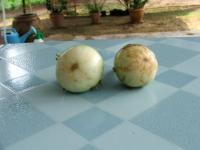

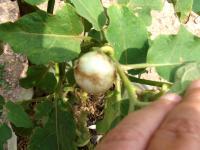
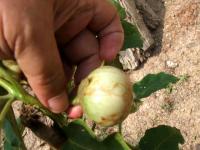
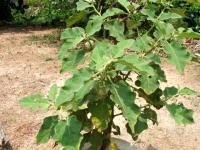

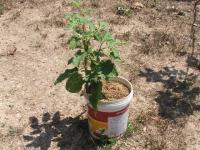
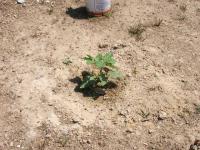
Tomatoes
in Farming in Thailand Forum
Posted
Systemics work well if directions are followed. Note I did not recommend any 'recipes' they can all be found on the Sygenta web site, including exclusion times for sale/eating....
When dealing with any chemical formulations I ALWAYS check what the mfgr's directions are.
Bt